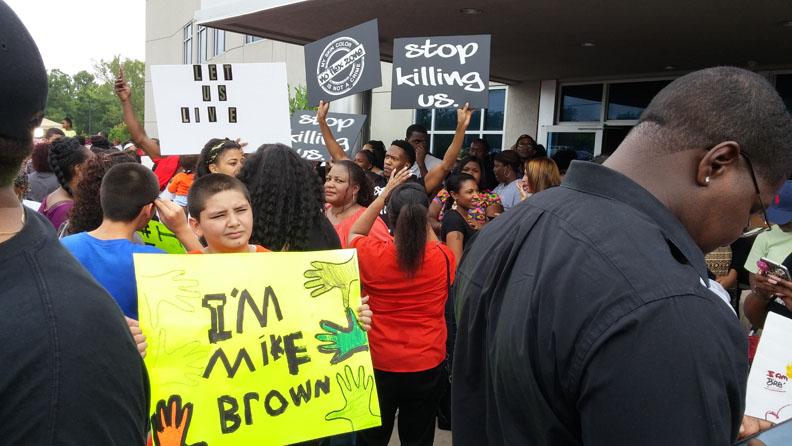Social Media and Ferguson
October 10, 2014
A geotagged time-lapse map recently released on the internet shows the location and number of times people retweet a particular phrase. Faint orange circles mark the location of the tweets, and as the number of mentions increase the circles become white hot. On Aug. 9, white circles began forming in all corners of the globe, including South Africa, India and Denmark.
The phrase? #Ferguson.
With the current crisis in Ferguson, after the shooting of unarmed 18-year-old Michael Brown, Twitter has become a hotbed for news updates and demands for equality. #Ferguson has been trending on Twitter, typed out by members of the Ferguson community, journalists, and people living all over the world. Being fast, accessible and free, Twitter serves as an excellent platforms for the spreading of important information. Essentially, Twitter is the modern embodiment of the American freedom of speech and press.
However, an increasing reliance on social media for providing people with news of current crises, can lead to narrow perspectives.
Tweets cannot exceed 140 characters. Originally marketed as a website to document life’s seemingly mundane moments, Twitter has come far.
Although this social media giant has transformed into a popular space for dealing with world wide struggles, elements of the old Twitter still remain. The sheer limit of characters suggests far different news-reports than an average New York Time’s article. It’s virtually impossible to describe the account of the Ferguson shooting in 140 characters, and it’s even less likely that people could point out the enduring issues of racial inequality and police brutality in two sentences.
Twitter also places an emphasis on users gaining followers and amassing thousands of retweets. With a few thousand clicks of a button, a Twitter user can easily be catapulted into internet stardom. Established journalists have criticized eager news reporters in Ferguson for being more preoccupied with making a name for themselves, than telling the story of Michael Brown. When journalists can write up a live update in thirty seconds, the temptation to make rash statements is far too easy to succumb too.
Perhaps the most concerning issue of people’s growing reliance on Twitter, is a disregard towards other sources. Tweets certainly have their place in a broad understanding of the Ferguson shooting, however they should be supplemented with a varied number of sources and perspectives.
In an age of massive networking, people have the opportunity to get a widespread and insightful view of social issues, an opportunity which fifty years ago was not possible. However, social media users must make conscious choices of from where they are getting their stories. Armed with a variety of perspectives, from a variety of sources, people have the opportunity to truly get the full story.


